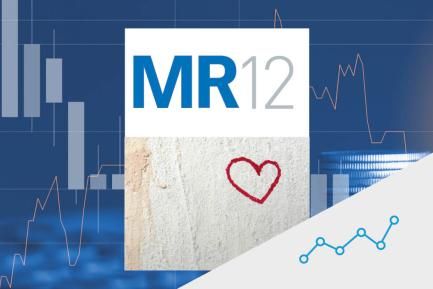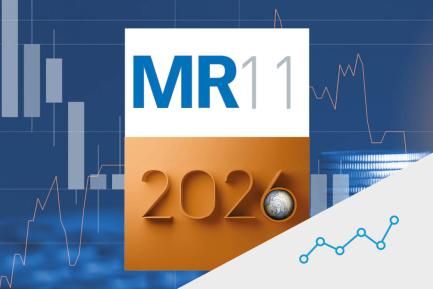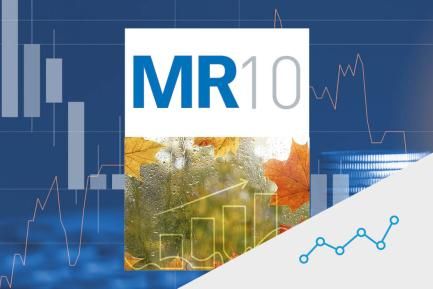
A hesitant start to the year in the financial markets
The markets start 2021 in search of direction
Investor sentiment began the year with optimism, propped up by the fading of some sources of uncertainty, such as Brexit and the transition of the US presidency, the start of vaccinations in various countries and expectations of an initial fiscal package proposal by Joe Biden. However, with the deterioration of indicators regarding the pandemic and the tightening of lockdowns in most advanced economies, risk appetite declined. Notably, the various economic sentiment indicators remain somewhat contained, especially in the euro area, suggesting that economic activity will continue to be restricted by the pandemic in this first quarter of 2021. In this context, stock markets showed a mixed tone throughout January, while sovereign yields remained anchored by the central banks, which are determined to maintain dovish financial conditions. Indeed, the major central banks focused their latest meetings on dispelling rumours of a possible premature withdrawal of the monetary stimuli. Furthermore, as usual, the Fed and the ECB reiterated that they have room to take further steps and provide an even more accommodating financial environment if the situation required it.

Stock markets are not yet immune to COVID-19
The major stock market indices kicked-off the year with broad-based gains in the first few weeks, spurred on by a hopeful start to the global roll-out of vaccinations. However, the realisation that the pandemic will continue to weigh down on economic activity during Q1 ended up dampening investors’ spirits. Most of the euro area’s indices fell over the month as a whole (the Eurostoxx 50 by –2.0%, the Ibex 35 by –3.9% and the PSI-20, –2.1%), whilst the US indices were able to weather the situation somewhat better and registered new all-time highs in some sessions, partly supported by a better-than-expected start to the business earnings season (S&P 500 –1.1% and Nasdaq +0.3%). In Asia, meanwhile, both the emerging economy indices and those of Japan registered considerable gains (Emerging Asia +4.2% and Japan +0.8%).

OPEC adjusts its oil production to changing demand
With economic growth expected to be contained in Q1, OPEC and its allies (OPEC+) decided to postpone the production increase of 2 million barrels a day (mbd) previously planned for early 2021. Following the meeting held on 5 January, it was agreed that Russia and Kazakhstan would increase their production slightly and gradually until March (+0.15 mbd in total) and that Saudi Arabia would voluntarily cut its production by 1 mbd. Thus, not only did OPEC+ not increase production for Q1 2021, but it cut it overall. This support from the bloc isolated the Brent oil price from the deteriorating economic and investor sentiment, allowing it to actually increase by almost 8% over the month as a whole, reaching 55 dollars.

The ECB’s asset purchases will remain key in 2021
Following the Governing Council’s meeting on 21 January, Christine Lagarde explained that the ECB is comfortable with the economic forecasts presented in December, in which the ECB already projected a continuation of the pandemic during Q1 2021, an incomplete recovery in economic activity until early 2022 and weakness in core inflation in the short and medium term. In addition, Lagarde noted that, with the measures announced in December, the ECB has given itself enough muscle to face 2021 with confidence. In particular, the Pandemic Emergency Purchase Programme (PEPP) has the capacity to buy up debt worth a total of 1.85 trillion euros (in 2020 the ECB spent 0.76 trillion and the budget has a further 1.1 trillion remaining, equivalent to 9.2% of the euro area’s pre-pandemic GDP). This capacity can be used up until Q1 2022 with a flexible rate of net purchase which can be adapted to the requirements of the prevailing situation on a weekly basis. In other words, with the available capacity of the PEPP alone, the ECB could buy as many assets in 2021 as it acquired with the sum of all its programmes in 2020 (this capacity will allow it to continue to provide coverage for its fiscal policy, as we discuss in the Focus «Sharp rise in public debt: will the euro area resist?» in this same Monthly Report). In addition, the ECB stated that it is equally likely that the programme will not be used in its entirety as it may need to be extended.

The Fed will maintain the stimulus for as long as the risks persist
At its January meeting, the institution headed by Jerome Powell kept official interest rates at rock bottom (0.00%-0.25%) and net asset purchases at the current monthly rate (80 billion dollars in treasuries and 40 billion in MBSs). While Powell acknowledged that the medium-term outlook had improved, he also indicated that the short-term risks remain high (increase in infections, new variants of the virus, and a slow rate of vaccination). Powell was thus clear in stating that the Fed must maintain an accommodative environment during 2021, he ended speculation about a possible early withdrawal of the stimuli and he stressed that, when the withdrawal does come, it will be gradual and announced well in advance.

Sovereign yields reflect a slight improvement in the medium-term outlook
This is illustrated by the rally in yields on the German bund and especially on 10-year US treasuries at the start of the year. The rebound in the latter was largely driven by the growth and inflation expectations which investors attributed to Joe Biden’s fiscal stimulus proposal. In the euro area periphery, meanwhile, risk premiums remained relatively stable with the exception of Italy. After the Italia Viva party withdrew its support for Giuseppe Conte’s government, the latter lost its absolute majority in the chambers and the parties must now garner new support in order to avoid early elections. This situation did not go unnoticed by investors and the Italian risk premium rose only slightly, reflecting the fact that they do not expect to be going to the polls early.



